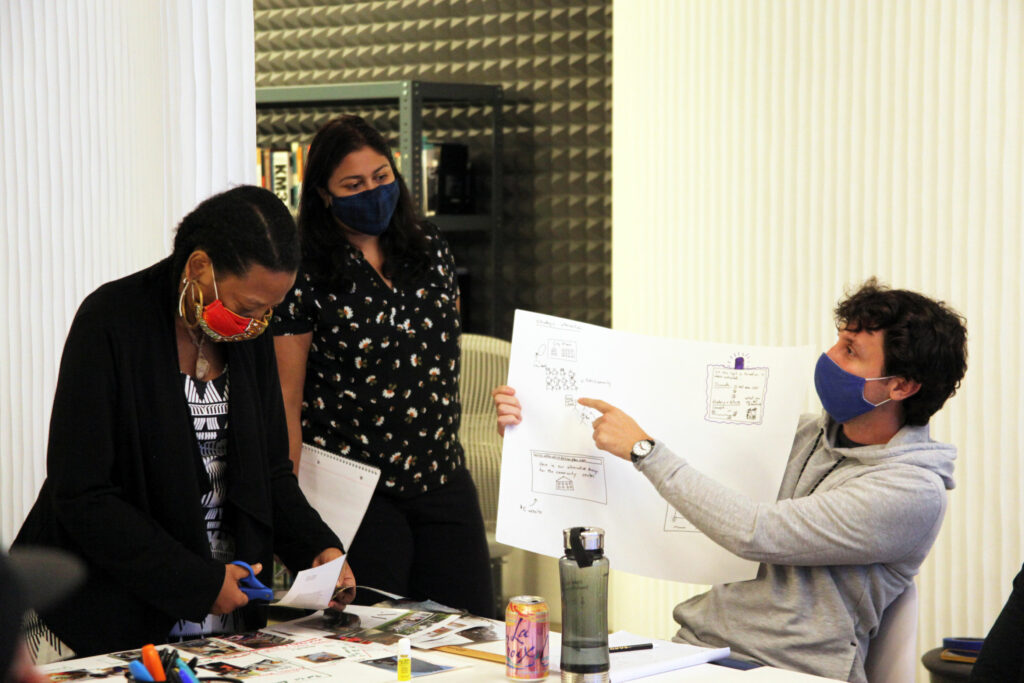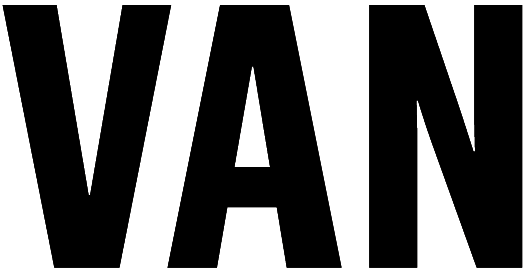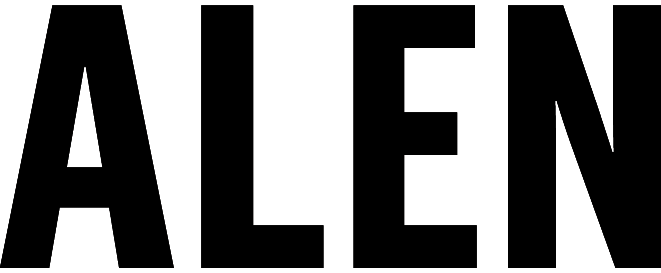Q&A with Nupur Chaudhury of Dark Matter University
September 28, 2021
"I come from a family of agitators, investigators, and protesters." As a Dark Matter University faculty member, public health urbanist Nupur Chaudhury is working with our Gowanus fellowship program.

Intro
Our Neighborhood Design Fellowship: Gowanus is a paid, six-month program for up to 12 Gowanus residents — designers and non-designers alike — to work toward the future they imagine for their community. The Fellowship is a collaboration with Dark Matter University (DMU), an anti-racist design justice school collectively seeking the radical transformation of education and practice toward a just future. Since May 2021, the Fellows have investigated local inclusion and equity challenges by talking to neighbors, business owners, community groups, and public officials, among others. They’ve also learned from DMU faculty about ways to support social justice through design. They’re currently developing a culminating project that will utilize Van Alen’s storefront windows at 303 Bond Street for a community-oriented purpose.
This week, we’re chatting with three practitioners and DMU faculty members who have been working closely with our Fellows: Nupur Chaudhury, Principal and Founder, NupurSpectives Consulting; Jerome Haferd, Co-Founder, BRANDT : HAFERD, and A.L. Hu, Design Initiatives Manager, Ascendant Neighborhood Development.
Nupur Chaudhury, Principal and Founder, NupurSpectives Consulting
Nupur Chaudhury is a bridge builder and translator in the fields of urban planning and public health. Throughout her career, she has developed and implemented strategies to support residents, communities, and neighborhoods challenge power structures to build just, strong, and equitable cities. She has led coalition building efforts after Superstorm Sandy through her work with the Rebuild by Design competition, redeveloped power structures in villages in India through the Indicorps fellowship, and developed a citizen planning institute for public housing residents in Brownsville, Brooklyn. Her work has been featured in the American Journal of Public Health, CityLab, National Public Radio, and the National Academies of Science, Engineering and Medicine.
Van Alen Institute: Tell us a little bit about yourself and how you got involved with design.
Nupur Chaudhury: I am a public health urbanist, so I’m trained in both public health and urban planning. I stumbled upon urban planning when I was an undergrad at Bryn Mawr. I was looking for a way to connect with and learn more about my homeland, about India. I found some really supportive professors in the Cities department, where I learned how cities formed, functioned, and grew through the lens of urban planning and architecture, but also through anthropology, literature, and history. I was always thinking about cities in this multidimensional way — not necessarily just the buildings and the spaces, but also the people that inhabit the cities, who they are, what motivates them, and how they take up space within these geographies.
After I graduated from college, I went to India and worked on the border of Bangladesh doing a lot of youth empowerment work and health work. Working in rural India, I understood how intrinsically health and space were intertwined — both the challenges of accessing health, but then also experiencing specific health episodes myself in India and not being able to get care, and how that was so spatially related. When I got back to the US, I tacked on a public health degree to my urban planning degree.
Out of grad school, I got a job as a health coordinator in Brownsville, Brooklyn. And I understood very quickly that I may have a masters in public health or a masters in urban planning, but I don’t have a masters in Brownsville. And I understood that we needed all three of those pieces of knowledge, three legs of that stool, if we were going to achieve what we wanted. So I spent a lot of time thinking alongside residents about what health meant to them, how they wanted to implement it, and what the steps were that we needed to take. I then leveraged my privilege as someone of color but isn’t Black, and as someone with the right letters next to my name to open doors to the city’s Departments of Health, Transportation, Housing Preservation and Development, and City Planning, and to get them to listen to what residents were actually saying. I could facilitate a space in which people who already knew what the answers were could actually play them out and implement them. That’s been my grounding mantra, centering people closest to the issue in every aspect of driving the solution. This year I opened my own consulting firm for folks who are willing to think about this work in new and different ways — who are willing to focus on the process and not just the product.
How did your interest in activism and organizing develop?
I come from a family of agitators, investigators, and protesters. On my father’s side, my grandfather was one of the young people that protested the British occupation in India and was actually incarcerated for that for a couple of years. And my mother comes from the state of Gujarat, the state that Gandhi was born and raised in. It’s interesting — my mother and my father think about Indian independence in completely different ways. On my father’s side, it’s thinking more about protesting more violence and agitation. And on my mom’s side, it’s thinking about nonviolence and changing systems in subtle and nuanced ways. So that’s the household that I grew up in.
And when the murder of George Floyd happened, I really took some time to think. I’m doing all of these things. But is it enough? Is it the right stuff? Is there a way that I could actually be amplifying the knowledge that I have, the experience that I have, the doors that I can open to a larger scale? And I’m still trying to figure that out, but DMU has been a great avenue to explore those questions.
Wth DMU, there’s real comfort in seeing people that look like me that are thinking about things and asking the right questions. For lack of a better word, we are the trailblazers, and we are also very isolated and alone in this work. I can’t tell you how many times I’ve gone to conferences as a presenter and people thought that I was the waitstaff. In the DMU space, we came together and asked: If we are joining forces, what can we create? How can we push the field? How can we be thinking about this work in new and different ways? How can we legitimize each other’s work in a field that ignores and delegitimizes us? DMU is genuinely thinking about how to improve the field so the people who come after us don’t have to feel the way that we felt.
How are you bringing that approach to the fellowship?
I found it really heartening that while the fellows are geographically differentiated across the neighborhood, many of them are linked through the Gowanus Mutual Aid network. They’ve already been thinking about ways to make Gowanus better, to change things, and to support each other. I was excited to see that because it means that these are the right people around the table.
The fellows are taking time away from their families, their loved ones, sleep, work, whatever it is, to say, “I want this place to be better than what I’m experiencing right now. And I’m going to be one of the few to try and do something different.” We have to honor that. We’ve been able to have very honest conversations about what’s working in the course, what’s not working, what people understand, what they don’t understand. There’s so much to explore and investigate, and we challenge each other from both sides, both DMU and the fellows, as we’ve co-created this experience together over the past six months.
What do you hope your design colleagues take away from your experience with DMU and the fellowship?
I’m hopeful that other designers, architects, and planners will start to see that community engagement and community involvement in the work isn’t additive, but essential. So much of the architecture and design world is for people, but people aren’t involved in the creation of it! If design doesn’t involve people, it’s empty. I’m really hopeful that designers, architects, and planners will think about the role of their work in new and different ways, and put people at the center.

